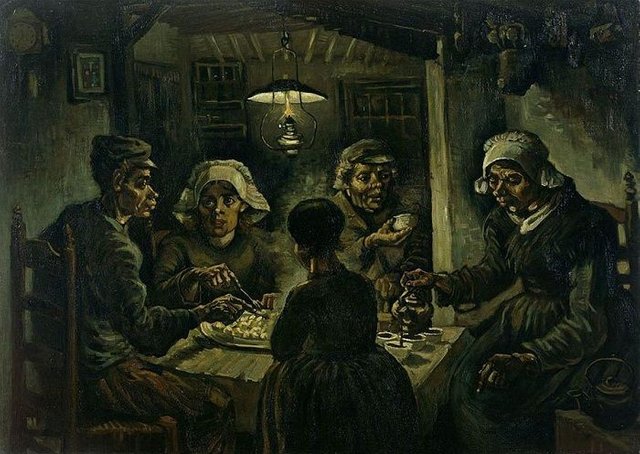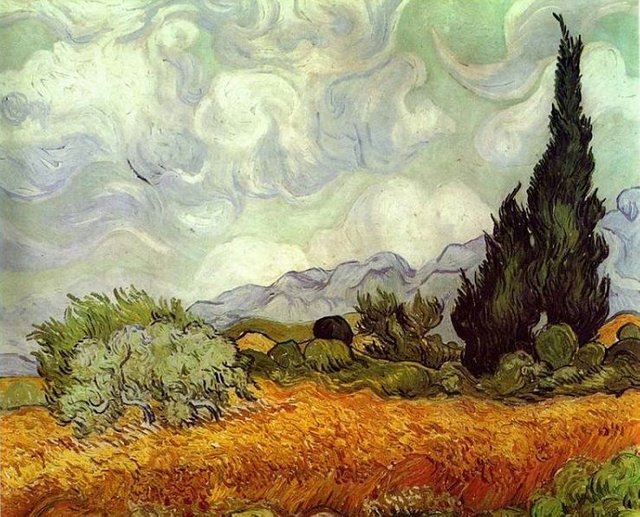Vincent van Gogh and the decision that changed the history of art

In the spring of 1878, Vincent Van Gogh was 25. Looking at his short life, the Dutchman finds out that he has nothing to celebrate - he has a career he doesn't want to do. According to the middle-class standards, it is a complete failure. The Dutchman is a despicable preacher. When he reaches the bottom, he starts painting. His brief stay in an art house first in The Hague and then in London and Paris was a waste of time: shy and clumsy, Vincent did not take up the profession and was sacked before 1876. Then he tried several times as a teacher in England, worked briefly at a Dordrecht bookstore, and finally moved to Amsterdam to become a Protestant preacher like his father. However, Van Gogh doesn't have the necessary patience or diligence to learn the material, and in 1878, several months after his 25th birthday, he goes to Brussels to enroll in the shorter continuing school of evangelicals. But even it turns out beyond its capabilities. After a three-month probation period in which his results are more than mediocre, the Dutchman receives a message that his training will not be continued.

One of van Gogh’s earlier works, "The Potato Eaters"
At that time Van Gogh's family was beginning to fall into despair. He has not stifled his socially unacceptable behavior, which is even more difficult to bear for others because of his strange tendency to dress with deliberately diverted clothing. How did a stranger like Vincent manage to make ends meet? His father even wondered if he would send his eldest son to a mental hospital. Van Gogh, however, was still engulfed by religious fervor and continued to believe he would find a job as an evangelist. At the end of 1878, he headed to the oppressive Mining district of Borinage, west of the Belgian town of Monte, firmly committed to realizing himself as a preacher of the working class.
Creating the master
Van Gogh stayed in Monte until the end of October 1880, then returned to Brussels. Although ultimately his ambition to become a preacher is scarred (Vincent's material situation deteriorates so much that his sister offers him to train for a baker), Borinage is a turning point in his life. That's where his good-natured brother, Theo, encourages him to try as an artist. Life in this luscious area seems to lay the foundations for many of the stories and motifs that excited Van Gogh as an artist over the next decade to his suicide shot at his chest in the summer of 1890. As can be expected, Vincent's life in Borinage is not fair. He lives in a miserly barrack, the rent for which he eats the bulk of his income, and changes his strange clothes with the more practical workers' clothing of the Borinazzites. Van Gogh is not a skilled speaker, and his sermons don't enjoy much attention. Its inability to make contact with local miners is further complicated by a difficult to overcome language barrier. He barely understands their swift crackling of the jargon known as "Walloon French," and they are puzzled by his strange French, who in their ears sounds too formal and preoccupied. In July 1879, just half a year after arriving in the area, Vincent was again caught up in trouble: the authorities discontinued his rights as an evangelical preacher, and he sank into deep depression.

Vincent van Gogh Two Peasant Women in the Peat Fields
Down to the bottom, Van Gogh, 26, desperate and self-conscious, takes his first hesitating attempts at painting. His religious fervor quenches, and the former evangelist begins to learn as a draftsman. "I often find nostalgia for the land of paintings," he wrote to his brother Theo in the summer of 1880, suggesting perhaps the time when he had everyday contact with arts in the art house. In autumn, Vincent left Borinage forever and headed for Brussels to study painting in kind at the Royal Academy of Fine Arts.
Laying the foundation
Which in Borinage has inspired Van Gogh to become an artist? On the one hand, he sympathizes with the working class miners. For the first time in his life, middle-class Van Gogh comes close to poor working-class people. People were poor and illiterate, their work was difficult and dangerous. Yet Van Gogh finds more sense in their way of life. After becoming an artist, he searches for his plots there. Like the masters he admired - like Jean-François Millet, he wants to depict workers in the working class and constantly does this during the first half of his career. But this topic always remains important to him. In addition to his general concerns about everyday life and rural poverty, certain topics from Borinage will be constantly present in his art. As he writes in his letter: "In Borinage I began to work for nature for the first time." The simple houses in which the miners live are a good example, and two of his first paintings depict the houses in question and these motives are important to him throughout his career - some of his latest paintings are with cottages, so there are a lot of themes in his masterpieces, which directly refer to Borinage.

Wheat Field with Cypresses, 1889
Another reflection of his stay in the Mining Quarter is the way Van Gogh learns to paint - making black and white copies of famous works of art. In 1889, in Saint Remy (in southern France, where Van Gogh is settling down at the end of his life), he restarts his old occupation - only this time he makes colored copies. So he returns to the prime source of his career. A few Van Gogh paintings from his Borinian period survived because he destroyed most of them, as he explained in a letter to a friend. Perhaps he thought they were too gaudy, or they were full of memories of the difficult times when he was still developing his own style. Yet his stay in Borinage is fateful for his formation as an artist, because there he laid the foundations he later built his masterpieces.
I'm a BIG fan of van Gogh. I also love absenth :D
Thanks for sharing!
Haha, very nice, absinthe is good drink for the early mornings :)
Yeah! Early mornings at the end of the night ;D
Thank you for sharing this piece of history. I really enjoyed reading about the master's life. I too love Van Gogh's art. It's tragic to think that he destroyed a lot of his work!
done bro chk it vote for me my msg reply
img credz: pixabay.com
Nice, you got a 8.0% @minnowbooster upgoat, thanks to @godflesh
Want a boost? Minnowbooster's got your back!
The @OriginalWorks bot has determined this post by @godflesh to be original material and upvoted(1.5%) it!
To call @OriginalWorks, simply reply to any post with @originalworks or !originalworks in your message!
The story or biography of Van Gogh gives me great sadness, because being a genius ahead of his time, he turned out to be misunderstood and execrated as a social and artistic "rarity" (I believe that in life he did not manage to sell 3 of their paints). Years after his death was when he recognized his "truth" or the true artistic value of his paintings.